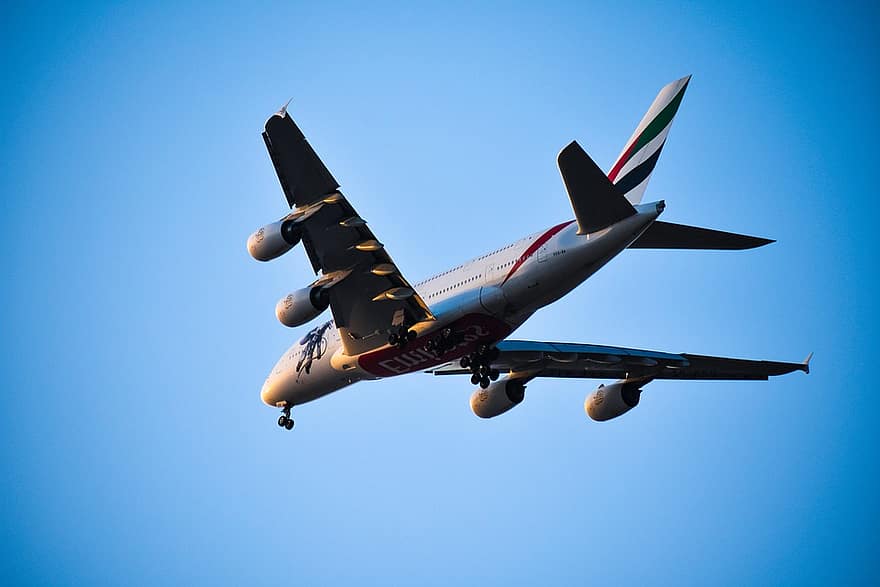Aviation
Aviation is responsible for 11% of CO2 emissions from transport and is the most difficult type of transport to decarbonise. Many zero-carbon solutions used in land or sea transport, such as batteries or hydrogen fuel, don’t translate well to meet today’s aviation needs. For the energy needed to fly, batteries are often too heavy and hydrogen cells too large for planes to operate safely at long distances. Therefore, further innovation into low-carbon flying technologies is needed for aviation to catch up to the net zero opportunities already seen in land transport and the maritime industry.
Progress towards net zero aviation
In 2013, the UN-based International Civil Aviation Organisation (ICAO) adopted a target of ‘carbon neutral growth from 2020’. In 2016, the ICAO established the Carbon Offsetting and Reduction Scheme for International Aviation (CORSIA), a global, market-based measure, which is expected to be the main international instrument for achieving their carbon neutral goal. Unfortunately, CORSIA has significant shortcomings, including the likely non-participation of many countries and questions about the quality of offsets included in the scheme.
The development of new technologies is essential for this sector to reach net zero. Therefore, more aircraft designs such as Airbus’ new zero-emission hydrogen-fueled concept aircraft are needed. Along with new aircraft designs, alternative fuels are needed to reduce emissions of current planes. Although hydrogen and biofuels are being developed, large capital investment is needed to increase production and reduce costs.
“We rate the international aviation sector’s carbon neutral growth goal as ‘critically insufficient’” – Climate Action Tracker
Pathways to Net Zero Flying
Current Challenges
- Batteries are too heavy and don’t produce enough energy to safely fly. We would need a 6-fold increase in performance per kg for batteries to be commercially viable for long distance flights
- Hydrogen-based products are too big — even ammonia, a popular fossil fuel alternative, doesn’t have the volume-to-performance ratio to be commercially viable for long distance flights.
- Aviation biofuels are underdeveloped. Sustainable aviation fuels (SAFs) are currently blended into fossil fuels (with a blending ratio of around 50%), making them a better option than pure fossil fuels, but still not a zero-carbon option. SAFs are also expensive and will compete with land transport for the availability of biofuels.
- Some flights can’t be replaced by other modes of transport. 80% of aviation emissions are from flights over 1,500 km, a distance that makes driving or boating often impossible.



An image of a jumbo jet.
Net Zero Innovations for Aviation
Replace short and medium distance flights with zero-carbon alternatives
Electric high speed rails offer a great opportunity for travellers to quickly get to their destination without having to pay the environmental costs of flights. Reducing the demand for shorter flights by promoting train and car travel will help lower aviation emissions while boosting net zero land transport solutions.
Innovations in battery or hydrogen-powered planes will likely begin with short-haul flights, making net zero flying another potential option in the future.
Craft more efficient aircraft designs
More efficient planes mean more efficient energy use and fewer emissions. Material science can help increase the efficiency through composite structure materials. More advanced fluid dynamics can help with laminar flow control to reduce the drag force on the planes. New engine designs (or re-engineering of older designs) such as open rotor engines can also reduce the emissions that planes produce.
Improve ground and air traffic operations
Smoother air traffic management can reduce flight times and therefore reduce fuel use. On the ground, powering planes with electricity and reducing the use of jet engines for ground transport will also help cut emissions while maintaining productivity.
Expand the development of biofuels and synthetic fuels
While long-distance flights will likely need to be offset in the short-term, greater development in biofuels and synthetic fuels offers a potential solution for powering longer flights. Currently, these fuels are two to three times more expensive than fossil fuels, but widespread manufacturing and use could bring this cost down in the coming decades.
Offset remaining emissions
With projections that the aviation industry will only continue to grow in the coming years, it is likely that emissions from air travel will be ongoing. Therefore, meaningful offsets for aviation emissions are a necessary component of reaching net zero in the transport sector.
Net Zero Policy for Aviation
The international nature of the aviation industry makes national level policy harder to control and manage. The highest emitting flights are those that span large distances and therefore require an international approach to solve them. Currently, international action to address aviation emissions is not strong enough. However, national policies, such as the UK’s Committee on Climate Change’s recommendation of setting up a Greenhouse Gas Removal market for flying, highlight how governments can regulate domestic flying while still having a global impact.